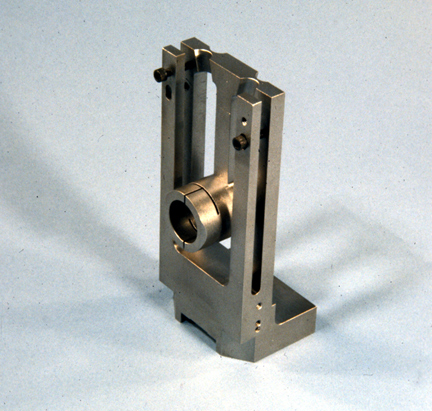
|
A third important concept is the use of flexures to provide for unusual motions and fine adjustments. This example was quickly made to bring the laser spots together in one of the early print head designs. It uses flexures in two different ways. The base is firmly anchored. The support posts in the rear, bridged together at the top, can be adjusted with great sensitivity by pushing them or pulling them with simple machine screws operating against the parallel cantilevered beams sticking up in front of them. As the support posts flex, they assume a third-order shape, with significant curvature at the bottom and none at the top. The unflexed member attached in the middle holds the lens tube, which is just 2/3 of the way down from the top to the flexure roots. With this particular spacing, the lens tube can be tilted in two axes with any desired precision without any axial travel! This flexure is therefore a very precise and adjustable kind of gimbal, but can be much more cheaply made! We just used it once, to correct the adjustability problem in an early system model. |
042